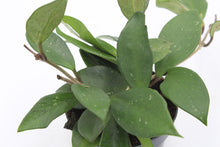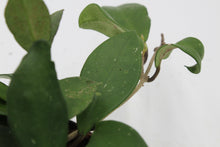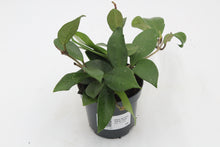Hoya carnosa is part of the Apocynaceae family and its native range is S. China to Laos, Japan (S. Kyushu) to Taiwan. It was one of the first Hoyas collected and cultivated for its’ desirable ornamental characteristics as well being a good grower.
This cultivar has light silver specks on the leaves, leaf blades are glabrous, fleshy and ovate-oblong with an entire leaf margin. Leaf arrangement is opposite with leaves occurring in pairs, nerves are pinnate.
Genus name is new Latin, named after Thomas Hoy ( c. 1750– c. 1821), English gardener. Specific epithet comes from the Latin carnōsus meaning fleshy or meaty, this is in reference to its' succulent leaves.
Pot: ø 10.5cm
Foliage: Approximately 15cm.
Light: Bright indirect light, meaning the plant sees the sun for 0-4 hours per day - this could be through trees or a translucent curtain, it’s important for the plant to see the sky in order to thrive. Hoya carnosa would appreciate 1-2 hours of direct light.
Water: Allow the majority of the mix to dry out as the mix is traditionally quite chunky, water will usually flow through quite easily. Be sure to thoroughly moisten the substrate. Pour water slowly over the top of the substrate and allow the water to pass through the drainage holes.
Potting mix: A chunky well draining mix composed of coco coir, perlite or vermiculite, orchid bark, and worm castings; you could also add some horticultural charcoal to this epiphytic mix. I have also found using a mix of coco chips, perlite and horticultural charcoal to be a good potting mix for Hoya.
Fertilising: Feed your plant every few waterings during the growing season or when you observe active growth. You can dilute fertiliser to half the recommended amount but never add more.
Temperature: 10-25°C.
Humidity: Hoya would prefer higher humidity, between 60-80% but do well to adapt to average home humidity. You can increase humidity by placing the plant on a watered pebble tray or using a humidifier.
For further information about Hoya, check out our blog.
Hoya aren’t considered toxic, however, they may make your pet or child vomit if ingested, keep out of reach just to be safe.





